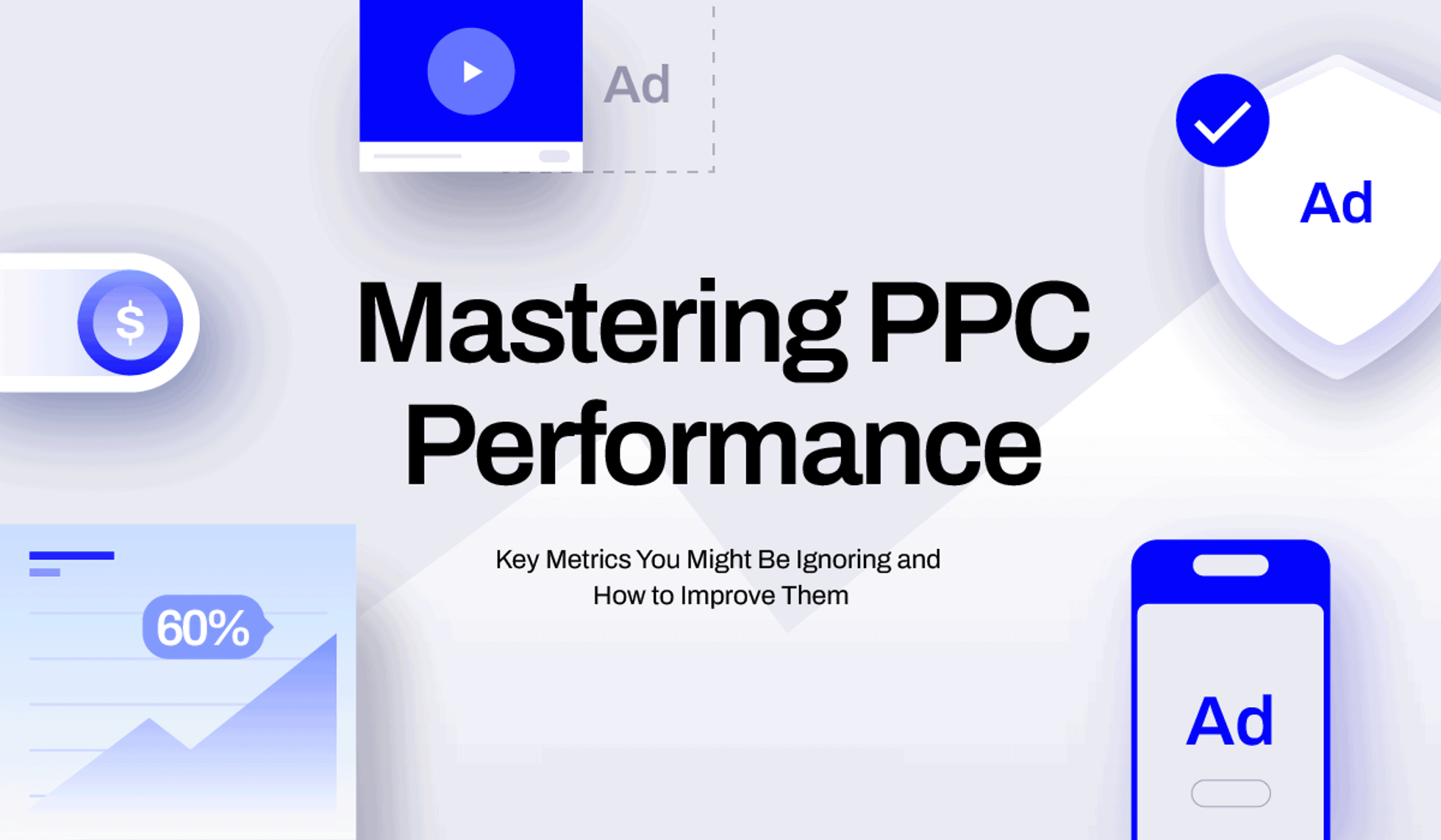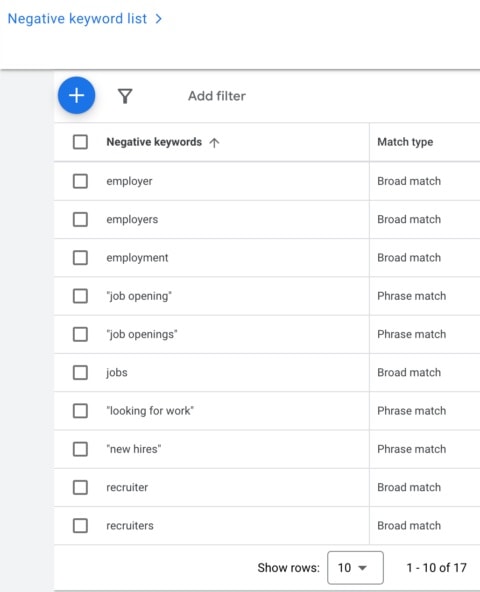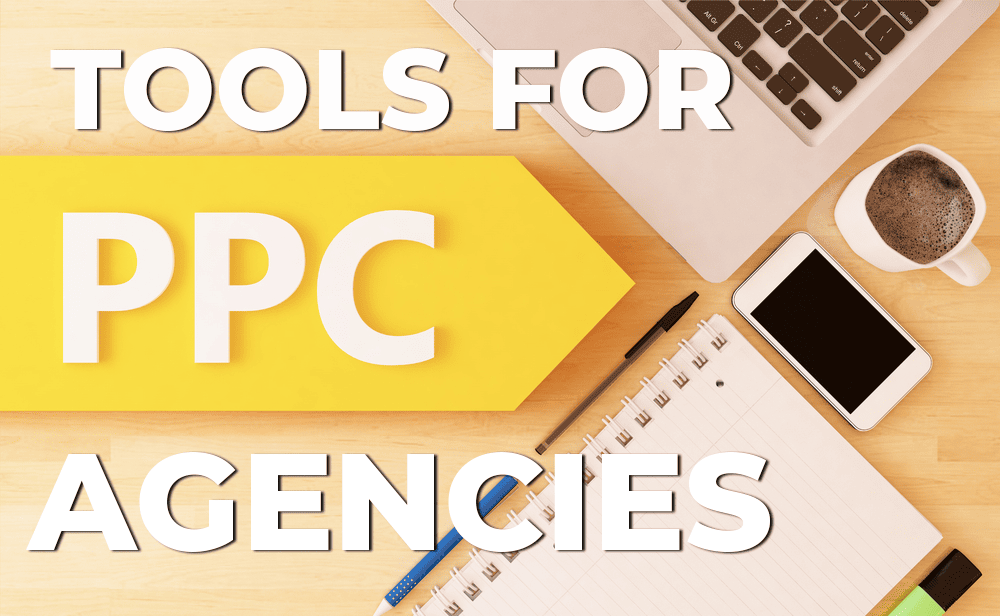This will help you to increase the efficiency of your paid search advertising through PPC Optimization. But before presenting our main recommendations, let’s define precisely what PPC optimization is. When your paid search campaigns are all live and data starts to come in, then the optimization phase of the work begins.
PPC optimization is the ongoing process of monitoring, analyzing, and modifying different campaign elements to realize improved performance aligned with your business objectives.
But the big question remains: Where do you begin?
Here are some ideas to get you started, or to continue to improve your PPC performance.

Keywords
Keywords play an important role in driving the appearance of ads within search results, facilitating the connection between searchers and the most fitting advertisements. Professionals are well aware that oftentimes, search queries do not precisely align with the keywords stored in the account.
Here’s where the concept of keyword match types comes into play: while exact match has proved to be the most accurate of all in serving ads, it is also the most restrictive and may miss out on some opportunities.
On the other hand, at the far other end, broad match offers the greatest flexibility in keyword matching but risks irrelevant searches triggering ads. Whichever the initial choice may be between the match types, what is necessary is to conduct a periodic review of the approaches that one is using to see whether or not the targeted audience is reached effectively.
Here are key metrics serving as performance indicators for keywords:
- Click-Through Rate: The minimum benchmark for CTR, when the keywords are more general and describe your product or service, should at least be 1%. Most of the brand terms drive CTRs plus 3%. This sets the bar whereby you realize that if your ad doesn’t meet these, maybe your ad is not relevant enough for the users to click. Scrutinize the search terms and assess ad relevancy.
- Conversions: Compare the historical conversion data against performance of new keywords to judge if relevant or too broad of a match.
- Interactions, Time on Site, and Website Metrics: If your traffic isn’t interacting with your site as you’d expect, it may indicate keyword optimizations.
Paying close attention to these metrics helps further refine your keyword strategy and ensures your ads will connect with your target audience more effectively.
Search Terms And Negative Keywords
Building off that keyword point, it is very common that your ads will fire for irrelevant searches or navigation queries, which will negatively impact your performance. This stresses the importance of a strong negative keyword approach to complement a PPC optimization. I break down my negative keyword initiatives into two different tiers.
-
Preemptive Negative Keywords
Generate organized keyword lists based on specific themes such as parts and accessories, job hunting, products or services that are not in your offering, and names of competitors you wish to avoid appearing for.
For instance, if one has an employee login on the main site and realizes that employees are clicking through the ads to get to it, then one should apply the “login” theme to create negative keywords for their potential searches. This will be a pre-emptive move to save your PPC budget from spending on employee related searches.
-
Responsive Negative Keywords
Examine the search terms that are activating your ads, taking into account both the match type and the keyword. Select the checkbox beside each search term for editing, addition, or exclusion, as needed.
Apply these new negative keyword lists proactively to similar campaigns. All shared lists can be easily updated at any time, knowing that all campaigns it is applied to will automatically update with the changes, too.
Here’s a simple example of a shared negative keyword list in action: one designed to block ads from serving for job searches and help protect click costs.

Budgets
I’m frequently asked about PPC budget strategy, and it’s a topic of great importance. Managing a budget is an art; determining the ideal overall investment and how to allocate it across PPC ad campaigns requires skill.
Although many advertisers set a monthly budget as the maximum, technically, budgets are set on a daily basis at the campaign level. Google works to serve ads in the best possible manner and hence is overspending at times, sometimes less than the daily budget. However, it will never go over the daily budget times the average number of days in a month, or 30.4 days.
While it’s important to monitor your spending, there are a lot of built-in safety guards to make sure that automation is working for you, not against you.
One thing to keep in mind: Google doesn’t auto-optimize how much budget goes to which campaigns, so you need to regularly do optimizations yourself. High-performing campaigns should receive a larger share of the budget.
Although this is a general guideline, it may not always apply. There are situations where branding and awareness campaigns or certain display campaigns yield fewer conversions. Additionally, campaigns related to your company’s brand name might convert well but may not require a significant budget increase.
If you’re using monthly invoicing for payments, you also have the option to set an account budget. This allows you to allocate a fixed budget amount across multiple campaigns, complete with a specified start and end date, which can be quite useful for more structured billing.
Responsive Search Ads
Responsive Search Ads (RSAs) represent the standard ad format within Google Ads. If you still have earlier ad versions in use, it’s essential to swiftly transition them to the most up-to-date format.
Is It Required to Hire an Agency to Handle Pay-Per-Click Tasks?
RSAs use a pool of up to 15 headlines and 4 descriptions, which are dynamically combined and tested using Google Ads’ AI capabilities. Over time, as data accumulates, Google’s algorithms generate ad strength feedback ratings, which can range from poor to excellent.
Beyond the overall ad rating, individual asset performance ratings are furnished, including learning, low, good, or best. Once a specific asset accrues 500 impressions and the entire ad garners over 2,000 impressions, it’s advisable to replace underperforming assets.
These ratings provide valuable guidance in pinpointing which assets necessitate optimization efforts.
While using automated asset suggestions can be advantageous, it’s also important to apply common sense and adhere to established marketing writing best practices to effectively showcase features, benefits, calls-to-action, and other compelling elements.
Conversion Actions
Following the recent introduction of GA4, it’s essential to conduct a thorough examination of your conversion actions. Here are some key aspects to focus on:
- Migration of Goals: Promptly transfer your existing goals from Universal Analytics to GA4.
- Verification of Conversion Tracking: Ensure that your conversion tracking is functioning correctly in GA4.
- Primary Conversion Alignment: Confirm that your primary conversion aligns with your business’s key performance indicator (KPI) in GA4.
- Exploring New Conversion Actions: Explore the possibility of introducing new conversion actions to gain more comprehensive insights into your PPC performance.
Consider a diverse range of conversion actions, such as tracking purchases, email sign-ups, whitepaper downloads, or chat interactions. This multifaceted approach provides a holistic view of user engagement and interactions with your website stemming from your ads.
Location Targeting
Optimizing location targeting based on your business objectives and performance outcomes is a best practice.
Certain advertisers may opt for the convenient setup options within PPC platforms, which can sometimes default to broader target areas like entire countries, even though more precise geo-targeting options are available, such as states, cities, zip codes, or setting a radius around a specific address.
Here are some strategies to enhance the efficiency of your ad placements in specific locations:
- Bid Adjustments: Adjust your bids based on location, increasing them for areas where you aim to generate more traffic.
- Layered Targeting: Overlaying a city within a state and adjusting bids higher for that city to prioritize it over the rest of the state.
- Exclusion: Exclude locations where you don’t provide services or where the likelihood of finding quality leads or customers is low.
Within the location view, advertisers can assess performance metrics for each selected segment and make data-driven decisions. You can raise bids for high-performing locations while contemplating bid reductions or removal for areas that don’t yield favourable conversion rates.
Keep in mind that using more specific location targeting may decrease your overall reach, but it often leads to greater efficiency.
This underscores the significance of regularly reviewing reports to assess the performance of different geographic segments and make the necessary optimizations.
How to Handle Negative Reviews Damaging Your Brand’s Reputation
How Often Should You Optimize PPC Performance?
Upon launching a campaign, it’s imperative to maintain a vigilant watch over it on a daily or semi-daily basis. This routine monitoring serves to promptly identify any warning signs and address issues in real-time.
For instance, errors in campaign setup or the disapproval of assets can crop up, necessitating immediate attention. The goal is to guide the campaign toward a stable state where metrics like impressions and clicks appear consistent, devoid of any concerning anomalies.
However, it’s important to exercise caution when integrating significant adjustments. The campaign needs to accumulate sufficient data for meaningful analysis. This might entail accumulating thousands of impressions or clicks or allowing a period of three to four weeks to elapse, depending on the budget’s capacity to generate volume.
In Conclusion
Since individuals continuously conduct online searches, there are perpetual chances to enhance an account through regular and steady PPC optimizations.
If this post has sparked fresh optimization concepts for you, consider incorporating them into your strategy and commence testing them today.










